The History of Martin 18-Series Acoustic Guitars
From mid-19th-century parlors to MTV, we retrace the history of Martin’s all-American 18-series flat-tops with CF Martin & Co’s museum and archives specialist, Jason Ahner
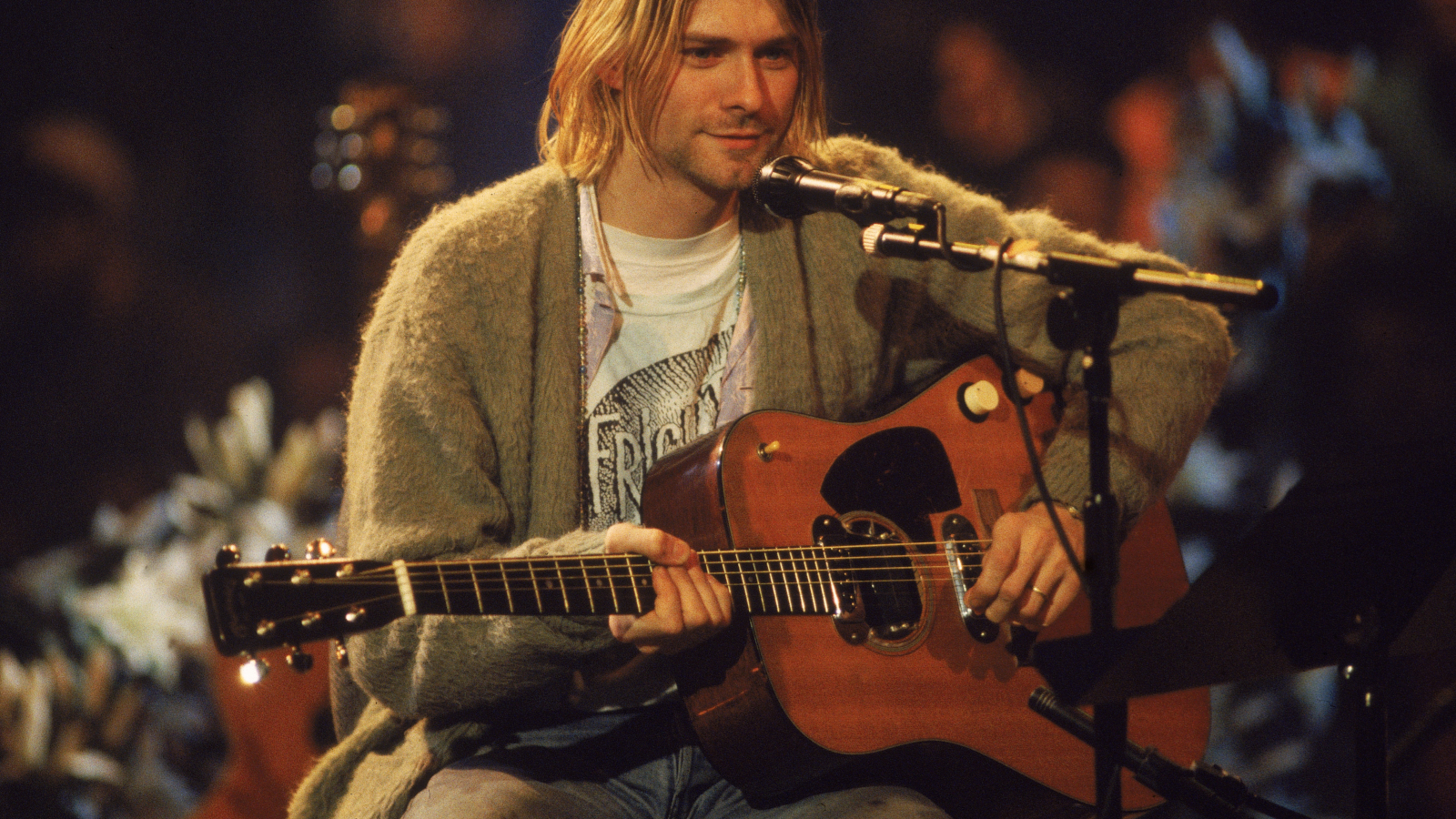
The roots of American guitar builder CF Martin & Company can be traced back several generations to the early 1800s. The story in America began in 1833, when Christian Frederick Martin Sr (son of German cabinet maker Johann Georg Martin and former apprentice of renowned Viennese guitar builder Johann Stauffer) emigrated to New York City. That same year, he set up shop and founded CF Martin & Co, before relocating to Nazareth, Pennsylvania in the late 1830s, where the company continues to thrive
Few guitar builders can claim to be as crucial an influence on the history of popular culture as Martin. Remaining at the forefront of guitar evolution since the mid-1800s with innovations such as X-bracing, larger body sizes, steel strings and 14-fret necks, Martin has endured as an industry leader, while the guitar continued to gain in popularity over the years with different musical styles emerging.
Although numerous benchmark Martin designs have stood the test of time with their understated elegance and world-class tone, spanning multiple music genres, the 18-series of acoustic guitars stands out for many as the classic embodiment of the instrument.
“Style 18s first appeared in the 1850s, before the U.S. Civil War,” Martin’s museum and archives specialist, Jason Ahner, tells us, “and at that point, they had a rosewood back and sides. Although, nowadays, most people think of 18s as having a mahogany back and sides, they didn’t change to mahogany until 1917, at a time when large manufacturers – mostly out of Chicago – were buildings thousands of guitars a year. Martin was trying to compete against the likes of Lyon & Healy, who built Washburn guitars, and I think because mahogany was cheaper than rosewood, it was a way to build some more competitively priced models, but it would have been what we refer to as ‘genuine mahogany’ sourced mainly from Central and South America.
“From the 1870s up until the 1910s, every guitar Martin was building had a rosewood back and sides – they weren’t using mahogany at all during that period. But if we go further back to ledgers from the 1850s and 1860s, we find guitars that had a mahogany back and sides with wholesale prices from $13, along with [rosewood] Style 18 guitars that cost $18 wholesale. That’s where Martin got the ‘18’ from. What we now call the ‘level of ornamentation’ originally referred to the wholesale price in dollars.
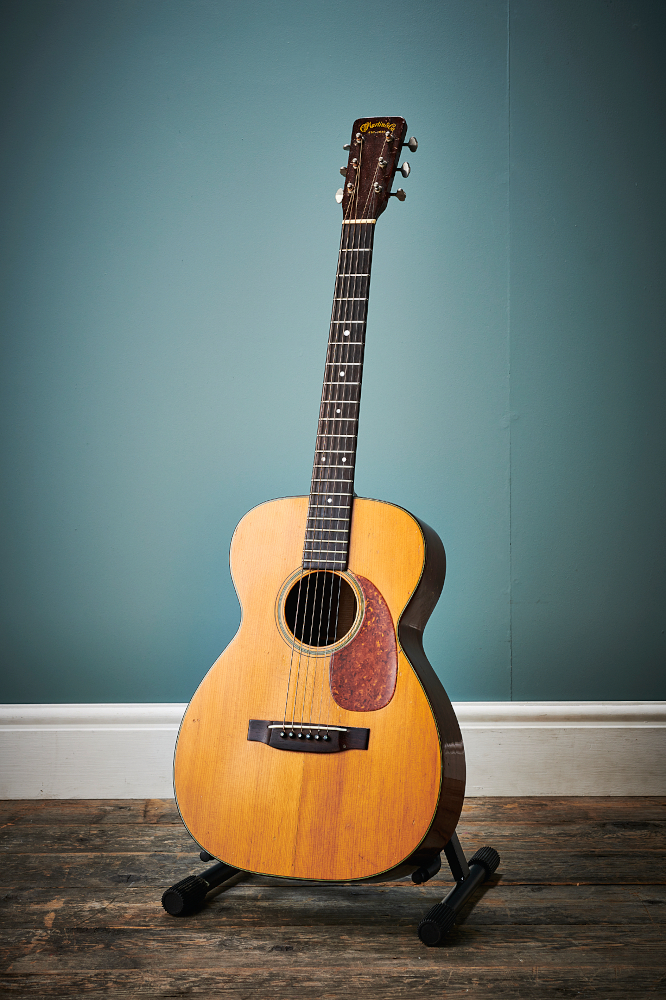
“I’ve seen 13s, 14s, 15s and 16s in our sales ledgers from that period that were mostly smaller mahogany guitars with very simple appointments, and the vast majority of them would still have [Spanish-style] fan bracing. Even 17s were fan-braced up until the turn of the 20th century, but once you got into a Style 18, you see that most of them have X-bracing.”
Designed by CF Martin Sr in the early days of the company, Martin’s revolutionary X-bracing system was a first for the acoustic guitar and is still in use today. “CF Martin Sr was experimenting with bracing in the late-1830s/early 1840s,” says Jason.
Get The Pick Newsletter
All the latest guitar news, interviews, lessons, reviews, deals and more, direct to your inbox!
“The [Stauffer-style] guitars he learned to build in Vienna tended to be ladder-braced, and when he started emulating the designs of the Spanish guitar builders he began using fan-bracing. We think one of the issues that came up when he was trying to use pin bridges with fan-bracing was that he’d drill into the braces – and then he’d have to pull everything apart, fix the brace and put everything back together again.
X-bracing helped give the guitar more volume
Jason Ahner
“What we do know about CF Martin Sr is that he was a perfectionist when it came to building, so we see him experimenting with bracing patterns quite a bit, and then in 1843 the first guitar with braces arranged in an X-pattern appears. It was built for an extremely popular Spanish guitarist that came to the U.S. in 1841 named Madame de Goñi. We can only assume that [Martin] liked it structurally because he could use a pin bridge without hitting the brace and he really liked the tone of the guitar – otherwise he wouldn’t have stuck with it!”
Like so many other breakthroughs in guitar evolution, the X-bracing system was notable for its ability to help improve the instrument’s volume. “X-bracing helped give the guitar more volume – even with the gut-string models of the time, it gave the guitar more of a punch,” says Jason. “If you play the Madame de Goñi guitar we have in our museum collection and compare it to a fan-braced model from around the same time, you’ll find it’s a noticeably louder instrument. And that would have been perfect for her because she was playing large venues at the time.
“Little did CF [Martin] Sr know that, around 80 years later when Martin really starts getting involved in steel strings, X-bracing would be the perfect pattern for a steel-string guitar. It just so happened that it worked. And it still works. It’s very hard to improve upon that design, and that’s why we still use it today.”
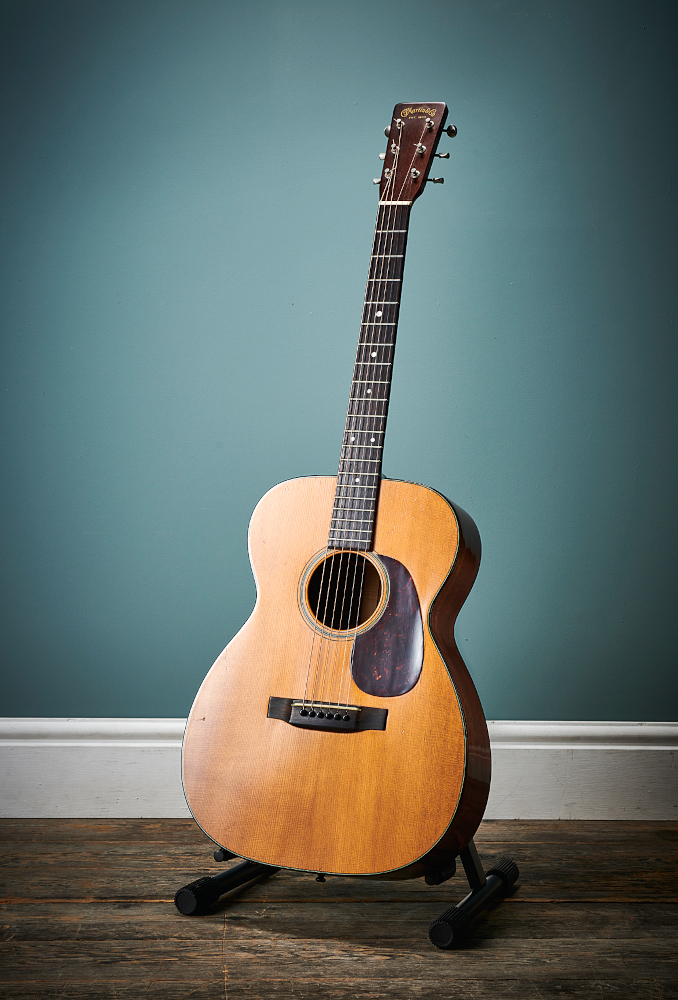
In its ongoing pursuit for greater volume following the introduction of X-bracing, Martin developed two larger bodied variants – sizes 0 and 00 – during the 1850s.
“The larger the instrument is, the more volume and low-end you’re going to get from it,” says Jason. “Early on, we see that everybody had what’s commonly referred to as a ‘parlor’ guitar – so-called because the guitar was mostly an instrument played by women as a form of entertainment in the parlors of their homes. It’s a bit of a loose term but, personally, I would say that anything below an 0 size [i.e., sizes 1, 2, 2½, 3, 4 and 5] would be a parlor guitar.
“But as the guitar grew in popularity, it started being played in larger venues and so the size of the guitars started growing. Martin built the first 0 size guitar in 1854, then you see the first 00 in sales ledgers in 1858. Prior to that, a size 1 was the largest model, which is what the Madame de Goñi guitar is, so we can see the demand for larger guitars was really starting to happen from then onwards.”
Throughout the late 1800s and early 1910s, guitar players increasingly broke away from the confines of the home parlor and became a prominent voice in band settings, orchestras and banjo/mandolin clubs. While seeking to be heard among the more strident-sounding metal-stringed fretted instruments, the guitarist’s need for additional volume was met by Martin with further advancements in guitar design.
Martin developed two larger bodied variants – sizes 0 and 00 – during the 1850s
Jason Ahner
“The first 000 appeared in 1902, as did the first steel-string that Martin built – a special order 00-21,” says Jason. “But Martin didn’t get into producing guitars with steel strings on a regular basis until the 1910s. Hawaiian music was huge at that time and that’s when Martin started building Hawaiian-style guitars with steel strings. After that, they would offer a guitar three different ways: with gut strings for classical playing; with steel strings for classical playing; and with steel strings for Hawaiian playing.”
Ultimately, steel strings became so popular that in 1923 they became the standard option for Style 18 guitars, while gut-stringed versions were referred to special orders. By the late 1920s, this became the norm for most other Martin styles, marking a new turning point in the history of the company.
“And then the Dreadnought arrived in 1916,” says Jason. “Originally, Martin only built Dreadnought models for the Oliver Ditson Company – the 222 and the 111, which was pretty similar to what would later become a D-18 [via the experimental D-1 model], because it had a spruce top with a mahogany back and sides. In 1931, after Ditson went out of business, Martin started building the Dreadnought under their own name.
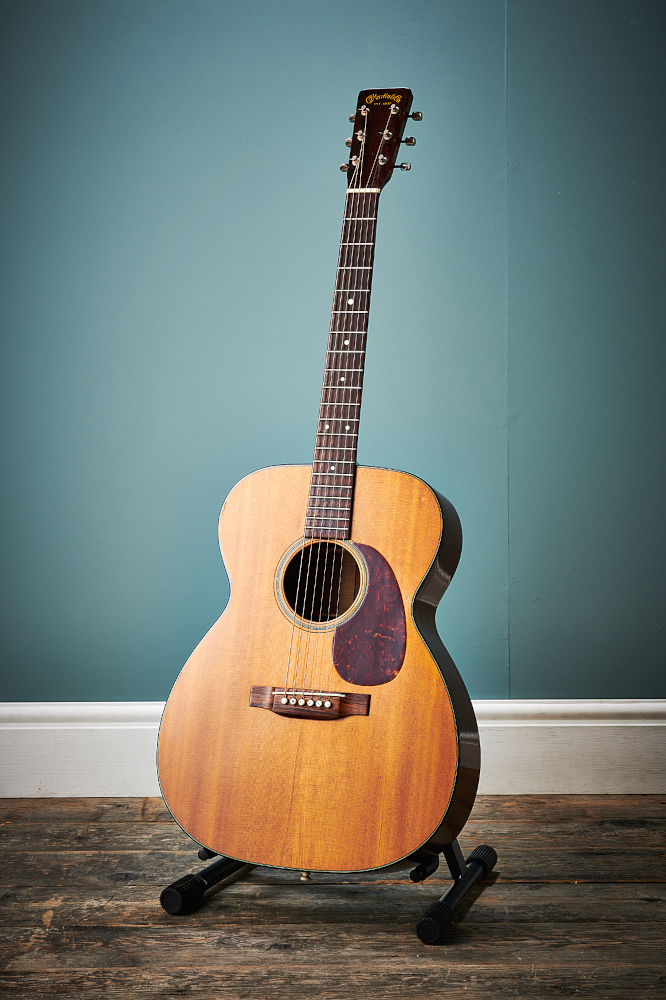
“Early on, the Dreadnoughts didn’t do that great because they were still the large 12-fret models with the thick neck. They had a 1 7/8[-inch] nut width and there was really no fingerboard radius, so it was kind of a classical fingerboard on a big steel-string guitar.
"But in 1934, Martin changed the design to the 14-fret neck and from there we really see the Dreadnought models take off. Martin had been building smaller guitars with 14-fret necks since the arrival of the OM-28 [in 1929], and they had 14-fret 0-18s, some with sunburst tops, in 1932. That became the standard very quickly. By 1934, Martin had switched over the majority of their line up to 14-fret necks.”
With mahogany backs and sides, spruce tops, X-bracing, steel strings, larger bodies and 14-fret necks, Martin’s 18-series had finally arrived in the form of what many see as an archetypal American acoustic guitar.
“As far as the 18-series goes, if you want the most balanced sound you can get, then you’re going to want an 0-18,” says Jason, “While a 00-18 is going to have a little extra volume and bass, and a 000-18 even more so, if you’re really looking for maximum volume and bass response, then you’ll want a D-18. That’s why the early country and bluegrass players gravitated towards Martin – players needed the most out of their instrument.
The first 000 appeared in 1902... But Martin didn’t get into producing guitars with steel strings on a regular basis until the 1910s
Jason Ahner
“The D-18 and the D-28 are both workhorse guitars when it comes to the history of popular music, but I think what really set the D-18 apart for a lot of players is that, although it was always a cheaper model, after a while people learned how well it records and how good it sounds live.
"Personally, I prefer a mahogany Dreadnought. Mahogany is less prone to feedback than rosewood. Because it’s not as dense, you’re not getting as much low-end, which is really where the feedback problems occur. And, to my ears, a D-18 records better. I think they sound a little more focused than a rosewood guitar and I can separate the notes a lot easier.
“There are tons of guitar players who have used 18s throughout the history of popular music. Bob Dylan used an 0-18 and a 000-18, as did Steve Earle. Elizabeth Cotten, Muddy Waters and Steve Howe played 00-18s. Woodie Guthrie and Martin Carthy played 000-18s, as did Elvis originally, then on his Sun Sessions he played a D-18. Gordon Lightfoot, Clarence White and David Crosby all played a D-18.
"We have Kurt Cobain’s [1953] D-18 in our museum. He nicknamed it ‘Grandpa’. It’s old and beat-up. And then there’s the [1959] D-18E he played on the MTV Unplugged show. After the folk boom of the ‘50s and ‘60s, Martin sales were down in the late ‘70s and through the ‘80s, but we saw things take off in the ‘90s when the MTV Unplugged shows aired.”
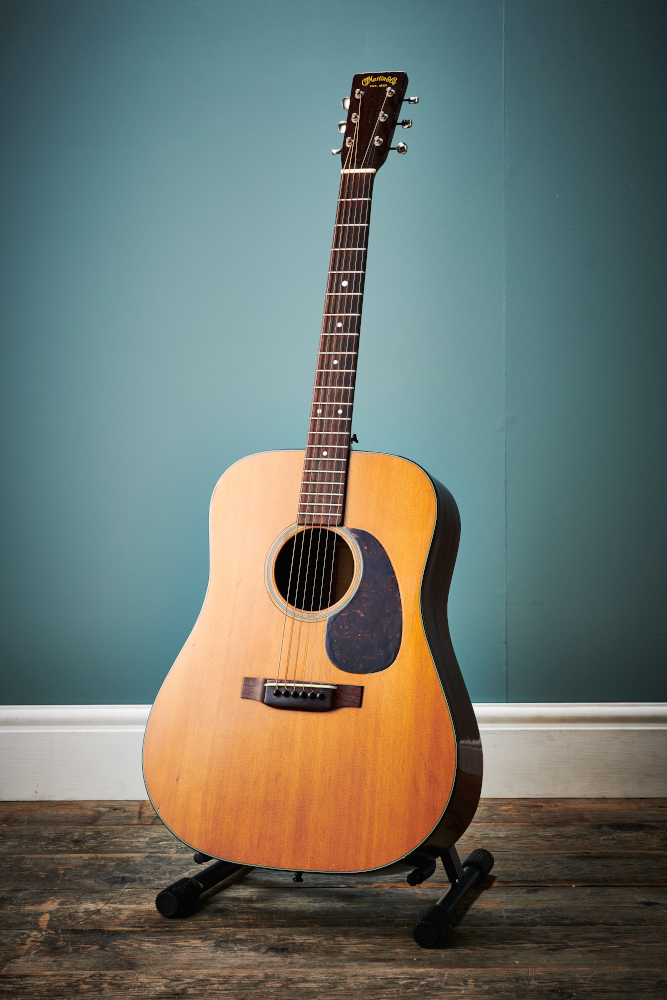
In more recent years, Martin has continued to build 18-series guitars by hand in time-honored tradition by taking inspiration from its golden-era production years of the 1930s and ‘40s.
“The sound factor is what makes golden era 18-series Martin guitars so attractive,” says Jason. “I think part of that did come down to the use of ebony for the fingerboard and bridge.
"Martin moved away from it for decades. Although it wasn’t recorded until 1940, you see the smaller 18s changing from ebony to rosewood fingerboards and bridges in the late 1930s, followed by the D-18s in 1946, but we went back to an ebony fingerboard and bridge, along with the earlier-style forward-shifted scalloped braces, on the D-18s in 2012. It’s been very well received and, since that time, we’ve started building the 0-18 and 00-18 again.
“We’ve had a lot of success with our 18-series over the years, and many players still look at those as the go to guitar when it comes to an acoustic.”
With thanks to CF Martin & Company, Vintage ‘n’ Rare Guitars in Bath, U.K., and Graham Firth.
Rod Brakes is a music journalist with an expertise in guitars. Having spent many years at the coalface as a guitar dealer and tech, Rod's more recent work as a writer covering artists, industry pros and gear includes contributions for leading publications and websites such as Guitarist, Total Guitar, Guitar World, Guitar Player and MusicRadar in addition to specialist music books, blogs and social media. He is also a lifelong musician.
“I felt myself starting to cry.” Eric Clapton’s 'MTV Unplugged' Martin acoustic returns in two guises. But Slowhand’s affinity for the guitar brand began long before that seminal live performance
"I have a Mercury on the guitar now, which makes me very happy.” Brian May’s new signature Gibson SJ-200 features a subtle tribute to the late Queen singer Freddie Mercury











